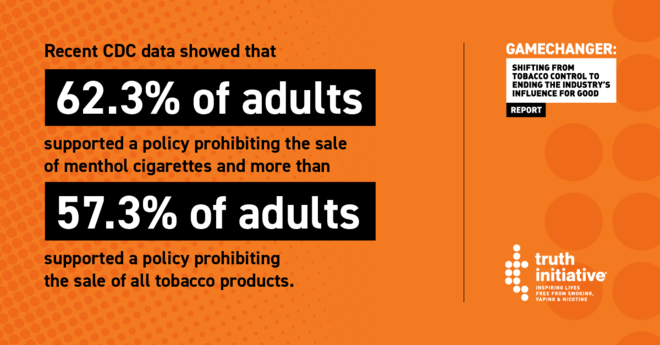3 lessons from the truth® campaign: How effective branding can save lives
Researchers who analyzed the impact of the truth campaign – and determined that it kept more than 300,000 young people from becoming smokers in just one year – have provided some valuable evidence about the role of branding in influencing health behaviors.
New research published in the International Journal of Environmental Research and Public Health measured exposure and sentiment toward the truth brand and concluded that building brand equity among young people not only improves message recall, but also influences behavioral outcomes. It found that 15- to 21-year-olds who feel more favorably toward the brand are less likely to be smokers, and for those who do smoke, they are more than twice as likely to report intentions to quit in the next year.
What lessons can be learned about brand effectiveness from truth, one of the country’s largest and most successful youth smoking prevention campaigns? We talked to the study’s lead author Donna Vallone, Ph.D., M.P.H., chief research officer at Truth Initiative®.
Think beyond ad awareness
Over 15-plus years, truth has produced many memorable ads that spread the facts about the health and social consequences of tobacco use and expose the marketing tactics of the tobacco industry. (Most recently: “Business or Exploitation?”)
Previous research on the effectiveness of truth, including a 2009 study that credited the campaign with keeping 450,000 teens from starting to smoke during its first four years, measured respondents’ recall of specific ads that appeared on TV or video display. The new study measures that ad awareness, as well as respondent’s sentiment toward the brand.
“As the communications landscape has evolved, we have all sorts of campaign-related content that we are pushing through many other platforms that don’t necessarily reflect our main ads,” Vallone says.
For example, truth-related content is delivered online through banner and video ads, homepage takeovers, paid promotions on social media sites, branded social media sites and a branded campaign website.
“All those elements go into campaign exposure, so we are using a brand equity measure that gauges not only awareness of our truth brand, but also attitudes or sentiment related to the truth brand,” Vallone says. “It is an alternative method of measuring campaign exposure that doesn’t rely solely on recall of a specific execution.”
Know your audience
“The truth brand works to reflect an in-depth knowledge of the consumer by making sure the messages are culturally relevant to young people in every way possible,” Vallone says.
In 2014, about a decade after the first truth ads debuted, campaign researchers launched in-depth field research “to understand what this new generation was thinking, feeling and seeing,” Vallone says. “We wanted to make sure that we were relevant to this generation.”
What did they find out? Among other things, “this generation is very interested in being a part of social movements, and supporting social causes,” Vallone says. “That was not something that was present in the early campaign.”
An in-depth knowledge of the target audience helps campaign developers craft the message and its delivery to maximize its effect. For example, truth airs videos during the GRAMMY awards. “That’s where our audience is; that’s where their icons are,” Vallone says.
Constantly evolve and adapt
Maintaining the ability to reach a young audience means constantly evolving and adapting.
“Particularly with youth and young adults, this group is constantly changing,” Vallone says, adding that staying up-to-date on youth culture is not the only thing that needs consistent monitoring.
“We also have to be very cognizant of the evolving trends in tobacco use product patterns,” Vallone says. “Product use is completely different now because there is such a broad portfolio of products.”
The emergence and popularity of tobacco products such as e-cigarettes, hookah and little cigars, show that the tobacco industry is constantly adapting too. Competing with tobacco companies means going toe-to-toe with an industry that spends more than $8 billion each year to market tobacco products in the U.S., and billions more around the globe.
“Our recent research proves that our approach is working,” Vallone says. “We are going to make sure our messages stay relevant so young people continue to reject tobacco.”
For more information on the effectiveness of truth, read the study “The Effect of Branding to Promote Healthy Behavior: Reducing Tobacco Use among Youth and Young Adults.”



